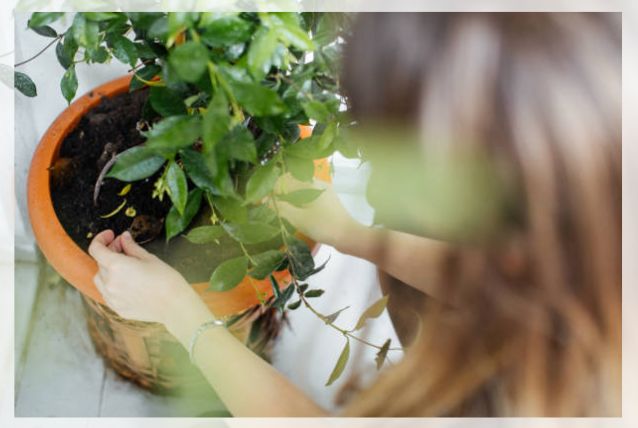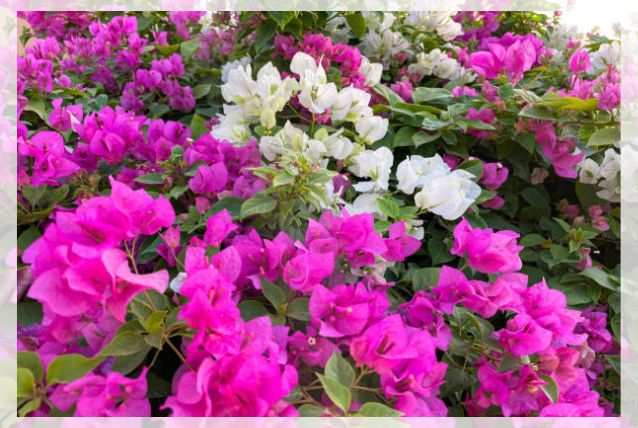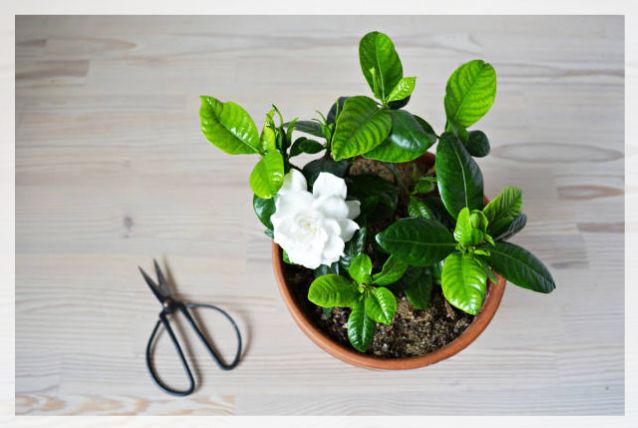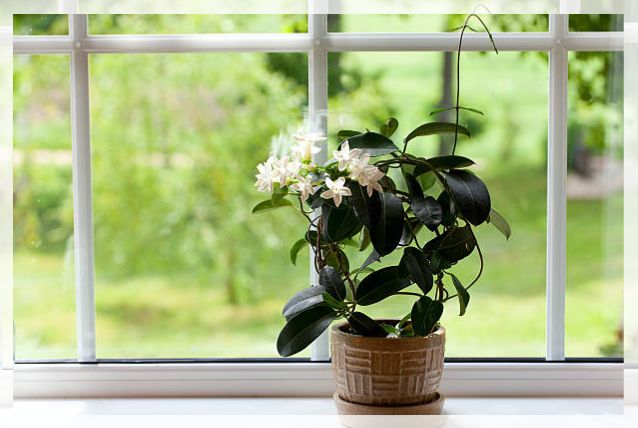Do you know that a jasmine plant can fill your garden with fragrant and sweet smells?
Although the jasmine plant is a vine that often grows outdoors, you can also grow them as houseplants indoors.
Moreover, you may find it confusing regarding jasmine and which g=variety is fragrant.
Do not worry, we have got you covered.
You can often find the scent of the jasmine plant as perfume and it also tends to have herbal properties.
Most of these plants can be found in tropical to subtropical climates, though a few can also grow in temperate zones.
One of the most important parts of protection for the jasmine plant is protection from cold temperatures.
Growing then can create a perfumed specimen in your arbors, trellises, and fences.
Furthermore, the bushes are excellent landscape plants with star pink, white, ivory, or even scented blooms.
Keep on reading.
Jasmine Plant
The genus of the jasmine plant consists of about 200 species of broadleaf evergreens and shrubs.
These are native to the warm regions of Asia and Eurasia.
Many of the vining species tend to be famous as climbers for outdoors gardens in USDA hardiness zones 8 to 11 and a lot of these are also popular houseplants.
Whether you plant them indoors or outdoors, the scent of flowering jasmine is greatly appreciated.
Moreover, when you grow them as houseplants, the vining jasmine varies in difficulty however, one popular one for growing indoors is the pink jasmine, i.e. Jasminum polyanthum.
This is also known by the common name White Jasmine, Chinese Jasmine, or winter-blooming jasmine.
It has deep green glossy leaves that grow on twining branches up to 20 feet long.
In late winter, this fast-growing vine tends to produce a profusion of reddish-pink bugs in dense clusters that then transforms into star-shaped white flowers tinged with pink.
Such blooming is often unusual for houseplants.
Learn more about A Beginners Guide on House Plants here.
Quick Facts about Jasmine Plants
Some quick facts about the jasmine plant are:
| Common Names | Pink jasmine, white jasmine, Chinese jasmine, winter-blooming jasmine |
| Botanical Name | Jasminum polyanthum |
| Family | Oleaceae |
| Plant Type | Vine, perennial |
| Mature Size | 20 ft. tall |
| Sun Exposure | Full to partial sun |
| Soil Type | Well-drained |
| Soil pH | Acidic, neutral |
| Bloom Time | Winter |
| Flower Color | White, pink |
| Hardiness Zones | 8-11 (USDA) |
| Native Area | Western China, Myanmar |
Jasmine Plant Care
In order to grow jasmine you will need to provide it with some direct sunlight during summer, consistent moisture throughout the year, and cooler temperatures in the fall to produce blooms.
Though a bit drier soil in the winter is also favorable to the plant.

You will need to provide it with some support like a trellis to climb.
Moreover, regular pruning of the plant will help to keep it neat and tidy indoor.
Or you can choose to run it free or clamber up vertical structures outdoors.
Light and Soil Requirments
It is important to note that the light your jasmine plant will need often depends on the plant species you are planting.
However, most of the species tend to thrive best in full sun to partial shape.
White Jasmine, i.e. J. polyanthum tends to thrive in bright light and can even tolerate some direct sunlight.
When you grow this plant indoors, make sure to place it in the brightest location in your home.
Moreover, when you are growing jasmine indoors, any standard peat-bast potting mic with added drainage material will be ideal for your plant.
However, when you plant it outdoors, the vining jasmine will need loose, humusy soil that is well-draining with a soil pH of 5.5 to 7.0.
Water, Temperautre, and Other Requriements
You will need to keep garden soil or potting mix slightly moist but not saturated.
Moreover, allow the plant to dry out slightly in the late fall and winter,
With indoor plants, on the other hand, make sure that your pot has good drainage.
It is important to note that at the temperature the jasmine plant thrives varies by species.
These plants tend to be colder tolerant than you may think and have no problem tolerating fall temperatures of 40 degrees Fahrenheit.
While you will need to move the potted plants outdoors from late spring to fall.
Moreover, feed your plant with a well-balanced liquid fertilizer throughout the growing season.
For the amount to use for your plant, always read the instructions and follow them.
Types of Jasmine Plant
The following are some popular jasmine shrubs and vines:
Arabain Jasmine, J. Sambac: This one has an intensity fragrant flowers while it is a shorter plant, that grows to about five feet tall.
Primrose Jasmine, J. primulinum: This one tends to have a shrub-like growth habit and has yellow, non-fragrant flowers.

Moreover, in some cases, it is also categorized as Jasmine mesnyi.
Orange Jasmine, Murraya paniculata: This is a different genus that is also popular as jasmine.
It is an evergreen shrub with small glossy leaves with small white flowers with a delicate citrusy scent.
Moreover, you can also choose to grow is as a houseplant, while it is also a favorite outdoor cultivator “Lakeview” that grows to 15 feet.
Pruning Jasmine Plant
When you have a jasmine plant outdoors, you can leave it on its own to climb where it wants.
However, as an indoor plant, you will need to prune it regularly to keep it under control.
Prune them aggressively at the beginning of the growing season to control their rampant growth and provide the plant with some support structure.

Moreover, you can commonly grow them with an arch or trellis.
However, be careful not to let your plant run wild, if you keep pruning it, it will be healthier and easier to manage.
Learn more about Pruning Tips and Techniques here.
Propagating Tips and Techniques
You can easily propagate the jasmine plant via stem-tip cuttings.
Here’s how you can do it:
- choose a healthy stem with enough new green leaf growth
- the cutting should have at least two leaves and one node while using sharp pruners or a pair of scissors to cut a 6-inch piece of stem
- remove all but one or two leaves from cutting
- fill a four-inch pot with soilless potting mix
- in order to increase the chances of success, you can dip the cut ends in rooting hormone
- make a hole in the soil with the help of a pencil or stick, slightly larger than the stem diameter
- then put the cut end about three inches into the hole
- gently press down the soil around it and you can fit more than one cutting in one pot, but make sure they do not touch each other
- place the cutting in a warm, bright location with high humidity and a steady measured supply of soil
- new growth should emerge in a few weeks
- once there is a good root system, you can transplant the new plant into a larger container or outdoors in the garden
Growing Jasmine Plant from Seeds
You will need to start jasmine seeds about three months before the average last frost date in your region.
Soak the seeds for 24 hours, then plant them in small containers filled with moist, nutrient-rich potting mix.
Then cover the containers with plastic wraps or domes and place them in direct sunlight.
Moreover, germination can take at least 30 days.
When the seedlings emerge, remove the plastic covering and keep the soil mosit until the seedlings for two sets of true laves.
Then you can transplant them to a larger containers o if the time of the year is right, you can trnasfer them into the garden.
Potting, Repotting and Overwintering the Plant
When you grow jasmine plants indoors, you do not need to repot them frequently as other houseplants.
However, you will need to move them to a pot with fresh soil every three years or so.
Make sure to use a fresh potting mix and prune down the roots when you move the plants so the roots have enough room to grow.
Vining jasmines that you grow in containers will need a large pot and sturdy climbing support.
Any type of pot is fine if it tends to have large drainage holes.
You can use a moist, peat-based potting mix, while a potted plant will enjoy it when you move it outdoors for the warmer months of the year.
Or you can leave it there until the weather drops to 40 degrees Fahrenheit.
Moreover, you will need to bring the vines of jasmine indoors during the winter.
Temperatures around the freezing point are too low for this plant to survive.
However, if the plant is growing outdoors in the garden, decrease watering about 6 weeks before the average frost date to inhibit new growth.
Right before the first frost, water the plant thoroughly to help it get through the winter.
Then cover the base with a few inches of straw or pine needles to protect it from the cold.
Common Pests and Plant Problems
Jasmine plant is vulnerable to common house pests like:
- aphids
- mealy bugs
- scale
- whitefly

You can identify the infestation as early as possible and treat it with toxic options.
Moreover, mealybugs which are the most common pests can be treated by dabbing them with a cotton swab dipped in rubbing alcohol.
Though jasmine plants do not have problems with diseases, however, anything that stresses the plant can make it vulnerable.
Some of the common issues can be:
Brown Spots on Leaves: This often occurs due to flower blight, which often appears after a rush of warm weather.
Remove any affected areas as soon as possible and put them in the trash, not the compost.
Leaves Dropping Off: Though this is common for a plant to lose leaves from time to time, it is uncommon for it occurs all at once.
Leaf drop often occurs as a result of overwatering, underwatering, or flower blight.
White Powder on Leaves: This often occurs due to powdery mildew which is common for any plant.
Moreover, this problem can spread rapidly, so you will need to treat it with a fungicide specially formulated for powdery mildew as soon as you see it.
To prevent this condition, make sure to keep the plant well-trimmed to increase air circulation around leaves and stems.
Getting Jasmine Vines to Bloom
Like other tropical flowering plants, the jasmine plant will need at least a 15-degree Fahrenheit difference between day and nighttime temperatures to bloom.
This will occur during the fall and winter.
However, if your plant does not bloom, the reason can be insufficient sunlight.
This is often a problem for indoor jasmine vines or too much nitrogen.
Make sure to feed your plant with a fertilizer for flowering plants that contain little or no nitrogen and a higher percentage of flower-boosting phosphorus.
Moreover, make sure that the plant is in a location with enough sunlight.






Leave a Reply